Pastoral Responses
Loren L. Townsend
Daniel G. Bagby, Editor
(Abingdon)
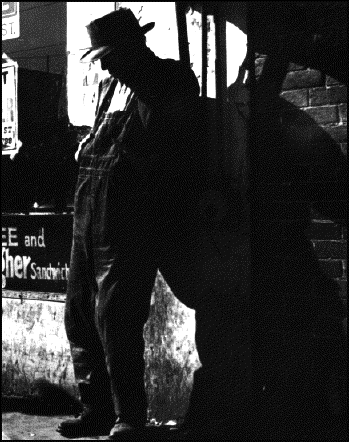
The original Jerusalem Bible had nothing to say on the subject, but St. Augustine claimed that the commandment "thou shalt not kill" applies to the self. The family therapist Salvador Minuchin said a potential suicide is the scariest client that a counsellor can face. You don't want to wake up one morning to find that you failed to protect someone from their own anger.
There are, the author says, key changes that we can spot in the would-be suicide. A person who has been bitterly depressed will suddenly become calm, even cheerful. Once the fatal decision has been reached, once the pills have been stockpiled, the guns on hand, then he or she can relax, get on it. No more struggle; no more depression --- soon I'll be out of here.
I had a friend in college who said that he got as far as purchasing a shotgun, taking off his shoes and socks, teaching himself how to work the trigger with his big toe. The undoing, alas, was the taste of gun-grease in the barrel, in his mouth. He couldn't handle that.
Having guns in the home increases, dramatically, the chance not only of accidental shooting of family members and friends, but of suicide in the family. "Studies show that owning a firearm presents the highest risk of lethality. Firearms are one of the most certain and violent ways to bring life to an end," says Townsend. Someone should alert the National Rifle Association to the fact that its membership is at high risk; that their numbers may decline drastically due to their militant stance on the right to bear arms.
The author deals with one facet of suicide that most of us might not have thought about. It is the conflicting role of a counsellor. What to do if a client comes to you with immediate, well-thought-out plans for checking out? The question then becomes: when do you break the rules of confidentiality and call in the police or the EMS (Emergency Medical Service)? If you choose not to take such action, says the writer, be sure you document, and document fully, the reasons that you chose not to call 911. Your own survival as a counsellor may depend on it.
This volume is primarily a book for pastors, who may face specially tough questions from those contemplating doing themselves in. There is, of course, always the question of whether Jesus committed suicide: "Scripture affirms that Jesus chose the way to the cross," Townsend writes. "He willingly walked into a situation that he knew would kill him."
- Deep within our Christian heritage lie the basic questions of the value of physical, earthly life ... is self-determined death part of the story of redemption?"
"Life is the gift of God and that God will not give a person more suffering than can be endured. To take one's life is a failure of faith because it sets limits on how much suffering we think we can endure."
The author cites the fate of those who are not "part of the story." The dominant cultural story is white, employed, heterosexual. But "when some difference sets our story apart, we become marginalized and disenfranchised from the benefits offered by the dominant narrative." "In one study, psychiatrists found that nearly 70 percent of nonfatal suicide attempts (mostly women) were intended to frighten or manipulate others without intent to die. Patients in the study universally disagreed."
There is a moving quote from one of those who tried and failed: Hope, the author concludes "is the bridge from oppression to liberation that facilitates full humanity, and fosters an undaunted passion for life."
Finally, there is the salvation offered by Lesley Boone: "I tried to commit suicide by sticking my head in the oven, but there was a cake in it."
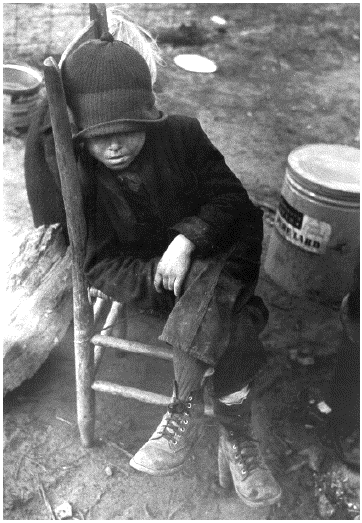 This is an informed rather than an uplifting, book. Seventy per cent of those who attempt suicide will ultimately succeed, although one out of ten will fail on the first run-through. Over eighty percent of suicides are white men and women. Men will succeed seventy percent of the time on the first try, women only a quarter of the time. But women will be more persistent.
This is an informed rather than an uplifting, book. Seventy per cent of those who attempt suicide will ultimately succeed, although one out of ten will fail on the first run-through. Over eighty percent of suicides are white men and women. Men will succeed seventy percent of the time on the first try, women only a quarter of the time. But women will be more persistent. Like Ralph Ellison's invisible man or Franz Kafka's prisoner, when survival demands that our own story be subjugated to socially privileged stories, humanity is sacrificed to various forms of madness.
I'm not a daughter or a mother or a friend anymore. I am a "suicide risk," a new class of nonperson. People aren't with me; they watch me. They want answers I don't have, so they tell me what I felt and why I did what I did. I'm told my attempt was a power play in my marriage to get attention and manipulate. Like life and death are some kind of business deal. I'm told that I didn't really want to die because I didn't do it right the first time.
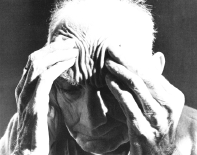 The ultimate question is not why but why not. We can guess why the suicide rate is three times the average in white males above the age of eighty-five: loss of sexuality, incontinence, loss of control, loss of a life-long partner. But why, in contrast, should the rate be so low in African American women? The author guesses that it comes from community, mentors, the "network effect." "Mentors help relational refugees cultivate a worldview that orients them to terms of their place in the world." These women, reports one study, "seem to survive the most deadly of social contexts with the lowest rate of suicide." African American women
The ultimate question is not why but why not. We can guess why the suicide rate is three times the average in white males above the age of eighty-five: loss of sexuality, incontinence, loss of control, loss of a life-long partner. But why, in contrast, should the rate be so low in African American women? The author guesses that it comes from community, mentors, the "network effect." "Mentors help relational refugees cultivate a worldview that orients them to terms of their place in the world." These women, reports one study, "seem to survive the most deadly of social contexts with the lowest rate of suicide." African American women have found hope in the shape of passion for the possible in their lives. This "unquenchable thirst for that which is not yet" provides motive for finding the audacity to live in otherwise impossible circumstances.
H. L. Mencken
of a book on suicide
Meditation
Discover the Freedom
Of Pure Awareness
Adyashanti
(Sounds True)

"When this awakening to our true nature happens, it may happen for a moment, or it may happen for a longer period of time, or it may happen permanently. Whichever way it occurs, it is perfectly okay."
- Who you are is who you are? You cannot lose who you are, no matter what your experience is. Even if you have a certain opening and you realize your true nature, and then later you think you've forgotten it, you haven't lost anything.
"The great twentieth-century Indian sage Ramana Mararishi had a saying, 'Let what comes come; let what goes go. Find out what remains.'"
This Adyashanti is pure chocolate fudge cream-cake ... without the nuts. There is no small promise in the cover. Pretty color picture of the author (nice eyes, dreamy expression). But then you open it up, squeeze a few of the caramels to see what's hidden inside, but there seems to be nothing but old rat droppings. Even the chocolate smells a little rancid.
"True meditation has no direction, goals, or method," we are told. It's like one of those novels by Robbe-Grillet, or Andy Warhol's eight-hour factory documentary of the Empire State Building. Nothing moves, nothing changes. Is this the message? Is the message that there is no message? Should we just forget it, get drunk, upchuck, go to a baseball game, or to bed?
Someone has stuck an interview with Adyashanti in on the last few pages. And we, at last, find something profound. What it is ... is that Adyashanti needs an editor: a Really --- as well as a Reality --- Editor. The italics below are our own:
- Usually, what I suggest is that they look inside themselves, and make a really deep inquiry, an open-ended inquiry, into what they really, really want. I tell them to make no assumptions about what they want. And I often say, don't make it about what you think you should want. Or what a teaching said you should want. Really look at what you really, really, really want.
"This is what I mean by integrity: the willingness to really find out for yourself. And what I've discovered is that if someone really looks and sticks with this investigation, looking into what they really, really want, it can bring them much more to a unified place. It naturally brings them there."
One thing the Q&A does, besides giving us a queasy overdose of really's, is to offer the chance to watch our master get a bit tetchy. "You are going to sink or swim with this stuff from your own sincerity. If you have it, good. And if you don't have it, I'm not going to rescue you ... I'm really out of the babysitting business."
As they used to say on the old Bing Crosby radio program: "Oh, really?" "No, O'Reilly."
"I'm here to talk to people who are actually really sincere about awakening. If they don't have that sincerity already, then they are with the wrong guy. Because I'm not going to give sincerity to them, and I'm not going to invest much energy into to trying to get them to pretend like they are sincere." That's it for Buddhist compassion, patience and love.
The same week this one arrived in the mail we got Zen Master Seung Sahn's Wanting Enlightment is a Big Mistake. Here is something Sahn told a faithful woman student: "Women cannot get enlightenment!"
- This was unbelievable! Half-expecting
that he was joking, she looked up, but by then he had already marched into another room. She followed him, where he had busied himself with some things, almost as if the conversation had never occurred.
"I have been practicing with you for several years now," she said. "You have always just taught us to believe in our true self 100 percent. How can you possibly now say that women cannot get enlightenment?"
Wheeling around sharply, Zen Master Seung Sahn pointed his finger at her and, looking into her eyes strongly, said, "So you're a 'woman'?"
The student was silent as his teaching sank in.
And there it is: the difference between the ancient Korean master and this upstart Adyashanti. One practices righteous anger; the other practices self-righteous anger.
Buddhist
Writing
2006
Melvin McLeod
Editor
(Shambhala)
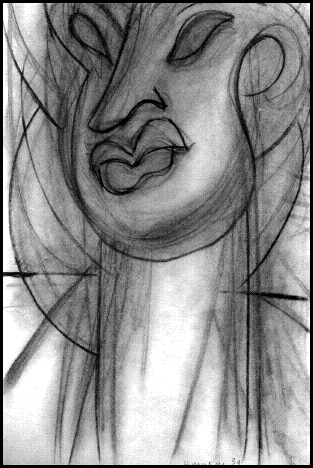
Yet here we are, with another compilation, another claiming to be the Best of. Thirty-five articles which we can roughly divide into (1) Lectures on The Buddha Line, and (2) Personal History of the Practitioners. We found that those on the theory and earlier teachings are dull dull dull. John Welwood, in "The Perfect Love We Seek, The Imperfect Love We Live," offers such homilies as "If the pure essence of love is like the sun in a cloudless sky, this clear and luminous light shines through relationship most brightly in beginnings and endings." And, "What feels most affirming is not just to feel loved but to feel loved as we are. As-we-are means in our very being. Absolute love is the love of being." Humnf. Pema Chödrön doesn't do much better in her parsing of Shantideva's The Way of Bodhisattva the subject being kleshas. (We always thought kleshas were those high-spirited bands from Israel.)
- We were all there and she was not and there was an emptiness so stark and wide that it seemed the whole world could fit into it .... How inconceivable a God that could create a heart capable of bearing such vast emptiness. The only mercy of those moments was the near-smile on her face after the breath left.
George Crane can be as soulful in the story of Ani and her orphanage in Mongolia. For $15, this Buddhist nun feeds fifty to sixty children a day, and the picture the writer paints of the children does, indeed, burn: "I walked the streets, I was most often followed by clouds of street kids begging or selling small bags of sunflower seeds to scatter to the wind and the pigeons --- offerings, gifts for the Buddha."
- Some so young they fried the soul, stripped away the opaque membrane that stands between us and compassion.
"One thing you quickly learn in Ulaanbaatar is to watch your step, looking down always, for there is not a manhole cover left in place on the sidewalks and streets of the capital ... Children, occasionally whole families, crawl out from the underground with morning, continuing their hunt for scraps of garbage, for hand outs --- for survival and hope."
Crane is a dedicated student, author of an acclaimed book on Buddhism, so the only question we come to at the end of his powerful essay is ... why is he here and not there? Why is he not in Ulaanbaatar feeding the orphans?
Sometimes this let-me-tell-you-the-woe gets so intense that the reader just wants to stop. Diana Atkinson has, literally, "A Life Cut to Pieces." Diagnosed with ulcerative colitis as a child, she has been under the knife so often that she indeed is "cut to pieces" ... physically, ontologically, psychologically. It seems too cruel, one finds oneself skipping the details of the next operation. Then,
"As I write these closing lines, I am now scheduled for another surgery next week." She obviously feels the same overload as we do: "Recently I have been attending church..." implying that even the power of Buddhism is not enough to contain the grief at what has happened, what continues to happen, to her body.
There is a wonderful piece by Joan Sutherland (we assume not the opera singer so famous for her Carmen and Tosca) in which she quotes our favorite child's "Western sutra,"
- Row, row, row your boat,
Gently down the stream.
Merrily, merrily, merrily, merrily,
Life is but a dream.
There is a fine essay by Nancy Hathaway on being a honorable Buddhist and, at the same time, being a mother to a five-year-old in the midst of a screaming tantrum and finally there is Erik Hansen.
Erik Hansen. In one of its earliest issues, years ago, the editors of this magazine ran across one of Hansen's wonderful travel books. We were so taken by it that, in all innocence, we posted a reading from it, with full credit, name of publisher, etc.
Soon after, we received the following e-mail:
- To Whom it may concern,
It has recently been brought to my attention that your online magazine is using a chapter from my book Stranger in the Forest. The online usage is entitled "The Banana Pin Charm'" and it appears in Vol XV, Number 3 (MidWinter, 1998-1999) issue of Ralph Magazine.
I am the author of this work and I have not granted digital or any other rights to your publication. I contacted Ralph R. Doister, the editor-in-chief, last week, but have not heard back from him regarding the purchase of these rights. If I have not heard from Mr.Doister, or a representative of Ralph Magazine within ten days, I will refer this matter to the legal department and people in subsidiary rights at my publishing company, Houghton Mifflin.
Eric Hansen
What a Buddhist, eh?
His essay here, "After the Flood," tells of his personal experience with Katrina.
His memories of that disaster have little to do with Buddhism, a great deal to do with how much he and his dog suffered during and after the hurricane.
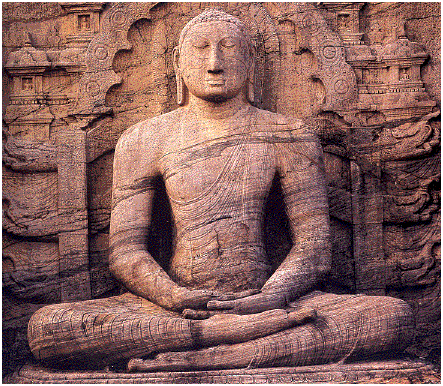
--- R. R. Doister